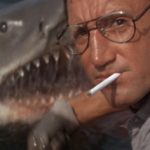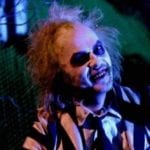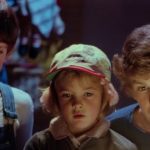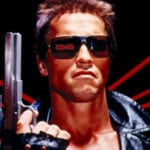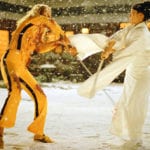 Mysteries
Mysteries  Mysteries
Mysteries  History
History 10 Surprising Stories About the Texas Rangers
 Humans
Humans 10 Philosophers Who Were Driven Mad by Their Own Theories
 Miscellaneous
Miscellaneous 10 Video-Game-Worthy Weapons and Armors from History
 Weird Stuff
Weird Stuff 10 Psychics Who Accurately Predicted Wartime Events
 The Arts
The Arts 10 Pieces of Art Inspired by a Broken Heart
 Health
Health 10 Science Fiction-Sounding New Medical Treatments
 History
History 10 Surprising Facts About the Father of Submarine Warfare
 Space
Space Ten Astonishing New Insights into Alien Worlds
 Weird Stuff
Weird Stuff 10 Bizarre Summer Solstice Rituals Still Practiced Today
 Mysteries
Mysteries Top 10 Haunting Facts About the Ghost Ship MV Alta
 History
History 10 Surprising Stories About the Texas Rangers
 Humans
Humans 10 Philosophers Who Were Driven Mad by Their Own Theories
Who's Behind Listverse?

Jamie Frater
Head Editor
Jamie founded Listverse due to an insatiable desire to share fascinating, obscure, and bizarre facts. He has been a guest speaker on numerous national radio and television stations and is a five time published author.
More About Us Miscellaneous
Miscellaneous 10 Video-Game-Worthy Weapons and Armors from History
 Weird Stuff
Weird Stuff 10 Psychics Who Accurately Predicted Wartime Events
 The Arts
The Arts 10 Pieces of Art Inspired by a Broken Heart
 Health
Health 10 Science Fiction-Sounding New Medical Treatments
 History
History 10 Surprising Facts About the Father of Submarine Warfare
 Space
Space Ten Astonishing New Insights into Alien Worlds
 Weird Stuff
Weird Stuff 10 Bizarre Summer Solstice Rituals Still Practiced Today
10 Behind the Scenes Facts About Space Movies
Film directors have been interested in space since the beginning of cinema, kicking off with Georges Méliès’s A Trip to the Moon in 1902. From grappling with inventive sci-fi concepts to attempting to realistically capture the astronaut experience, filmmakers have a challenge on their hands when telling tales set amongst the stars.
This list compiles some of the best behind-the-scenes facts about the making of space movies, covering everything from biographical dramas to sci-fi horrors.
Related: 10 Space Myths We Believe Because Of Movies
10 Real Danger on the Set of The Right Stuff
Based on Tom Wolfe’s 1979 book of the same name, The Right Stuff (1983) charts the progress of the aeronautical test pilots who were used at the beginning of America’s space program. This was an incredibly dangerous job, with some pilots losing their lives, and this danger, unfortunately, bled into the filming of the movie. Production designer Geoffrey Kirkland commented, “I think it’s the single most dangerous filming environment I’ve ever been in.”
Tragically, stuntman Joseph Svec died while performing the stunt for the scene where Chuck Yeager ejects from his NF-104A airplane after it spins out of control. While filming the drop, Svec’s parachute failed to deploy, and he was killed on impact with the ground. The exact cause of the accident is unknown, but it is thought that Svec may have lost consciousness due to inhaling smoke used to simulate the crash and so was unable to open his chute. Director Philip Kaufman explains that he “didn’t use any of those shots. We were all stunned. It was so connected with the theme of the movie, how dangerous all of this stuff was.” [1]
9 Making a Profit from the Corn in Interstellar
Interstellar (2014) sees humans reaching for the stars in search of hospitable planets after a blight has killed almost all crops on Earth. Corn is left as the only viable food source, but instead of using CGI to create the 500 acres of corn needed for the Cooper family farm, director Christopher Nolan decided to plant real cornfields. He spoke to Zack Snyder, who had planted about 200 acres of corn for Man of Steel (2013), about the practicality of actually growing the crop. He decided to go for it.
Nolan spent $100,000 to plant the corn, a risky move considering the location in Calgary. He wanted a view of mountains in the distance, despite being warned that corn rarely grows well in mountainous areas. But the risk paid off, literally, as Nolan’s corn grew well enough to be sold at the end of filming: “In the end, we got a pretty good crop, and we actually made money on this.”[2]
8 Prescribed Method Acting in Sunshine
Set in 2057, Sunshine (2007) opens 16 months into a mission to reignite the dying Sun, meaning the crew already know each other intimately when the camera starts rolling. Director Danny Boyle wanted the bond between the actors to feel real, so before filming began, he made them live together for two weeks in student accommodation. Boyle believes that “they made a group alliance together and that held for the rest of the film.” Hiroyuki Sanada, who played Kaneda, confirms that before shooting began, they had “created that sense of teamwork already.”
Living together wasn’t the only method acting experience Boyle requested, though. To fully get into character, he had them watch films, such as Das Boot (1981) and Alien (1979), and attend lectures by scientific experts, including Brian Cox, who served as the film’s scientific consultant. Boyle also wanted the actors to experience weightlessness, so he arranged for them to go scuba diving and undergo flight-simulated space training.[3]
7 Growing Potatoes on the Set of The Martian
Ridley Scott’s The Martian (2015), an adaptation of Andy Weir’s 2011 novel of the same name, follows a lone astronaut, Mark Watney (Matt Damon), as he struggles to survive on Mars after being accidentally left behind. One of his biggest challenges is food, but Watney is a botanist and devises a plan to grow potatoes using Martian soil that has been fertilized with human feces. This, by the way, is scientifically possible.
Everything was filmed out of order, so the film crew needed a constant supply of potatoes at different growth stages. Damon explains that they set up their own potato farm: “They were growing them in a soundstage adjacent to the one we were shooting in. So we planted them and re-planted them on the set.” Damon states that while he didn’t learn anything about being an astronaut or engineer, he “did learn how to grow potatoes.”[4]
6 Sound Design in WALL-E
The first 20 minutes of Andrew Stanton’s Pixar animation WALL-E (2008) feature no dialogue, but that doesn’t mean it’s silent. In fact, the deserted future Earth, which is explored by the solitary robot WALL-E, is bursting with sound—thanks to Ben Burtt. Burtt is the iconic sound designer of the Star Wars films, and Stanton kept using R2-D2 as a touchstone for the sound he wanted for WALL-E. Stanton recalls that he “said it enough times that my producers said, ‘Can we just get Ben Burtt?’”
However, after completing the Star Wars prequels, Burtt declared, “No more robots. No more spaceships.” After seeing that WALL-E wasn’t a Star Wars-style action flick but “more of a Buster Keaton movie with a lot of romance,” Burtt signed on. He created around 2,500 new sounds for the movie, in comparison to the 700–1,000 sounds required for a Star Wars movie. WALL-E’s speaking voice is Burtt himself. The clicking noise that WALL-E’s cockroach friend makes was made with a pair of handcuffs, while the “pew” noise of EVE’s laser-gun arm was created by striking a slinky.[5]
5 Katherine Johnson’s Involvement in Hidden Figures
Hidden Figures (2016), based on the book by Margot Lee Shetterly, tells the true story of three African-American women working as mathematicians for NASA during the Space Race. Sadly Mary Jackson and Dorothy Vaughan died before filming began, but Katherine Johnson agreed to meet the actress who was going to portray her, Taraji P. Henson. Johnson was incredibly humble despite her important role in getting astronauts into space, and Henson commented, “I don’t even think she sees herself as a hero.”
Although talking with Johnson about her experience helped Henson prepare for the role, it didn’t help her lacking math ability. Before shooting scenes where she performed calculations, Henson “practiced over and over.” Johnson was also integral to the writing of the book; she not only spoke to Shetterly about her life but also requested that other women be included. “She didn’t want this to be just about one person,” Shetterly says.[6]
4 Alien School for Galaxy Quest
The sci-fi comedy Galaxy Quest (1999) sees Mathesar (Enrico Colantoni), the leader of an alien race called Thermians, request help from Jason Nesmith (Tim Allen), the lead actor of a Star Trek-esque TV series. During the audition, Colantoni knew that he needed to inject an element of weirdness into his performance, given that he would be playing a squid-like alien in a human disguise. “The voice came from a vocal exercise that I learned at Yale; it’s just the touching of all the seven resonators,” Colantoni recalls.
Director Dean Parisot loved the voice and set up an alien school for the actors cast as Thermians to learn the voice and come up with the Thermian walk. “During alien school, we all threw out all kinds of ideas,” Parisot explains. “I’m basically the conductor, but they’re coming up with the performance.” Colantoni, along with Missi Pyle, Jed Rees, and Patrick Breen, attended, but because of time constraints, Rainn Wilson missed out and had to get “a crash course” from the other Thermians.[7]
3 Zero Gravity Scenes in Apollo 13
When turning the story of Jim Lovell, Jack Swigert, and Fred Haise’s aborted lunar mission into the movie Apollo 13 (1995), Ron Howard faced a challenge: how do you simulate the weightlessness of space? This was before digital effects were up to the challenge, and Howard was considering using wires until he ran into Steven Spielberg. The fellow director mentioned the KC-135 airplanes, which NASA uses to train astronauts. The plane, known as the Vomit Comet, creates near-zero gravity by performing a parabolic arc, which gives between 20 and 25 seconds of weightlessness.
Howard asked NASA if he could use the plane for filming, but they initially said no. He explained that “Jim Lovell intervened on their behalf and said, ‘Why don’t you give these guys one test flight?’” Lovell acted as a consultant for the film (and has a cameo as the captain of the recovery ship). With his encouragement, NASA relented and let Howard use the KC-135 for six months. Howard, Tom Hanks, Bill Paxton, and Kevin Bacon made around 600 stomach-churning parabolas throughout filming.[8]
2 Creating New Technology for Gravity
Alfonso Cuarón wanted long takes throughout his space survival film Gravity (2013), so Ron Howard’s tactic of using the Vomit Comet to shoot Apollo 13 scenes in small bursts was out. Cuarón, along with visual effects supervisor Tim Webber and cinematographer Emmanuel Lubezki, decided to film the actors’ performances and create the environment digitally. To do this seamlessly proved challenging because the light on the actors’ faces would have to perfectly match their digital background, which “can break easily,” explains Lubezki.
The technology to do this didn’t exist at the time, so they created the lightbox: a 6-meter x 3-meter (20-foot x 10-foot) structure covered in 4,096 LED bulbs that were programmed to create the correct lighting. Inside the box, the actor would be attached to a tilt rig to simulate the motion of spinning in space. The rig was laborious to get into, so when filming spacewalk scenes, Bullock would spend up to 10 hours alone in the lightbox. For scenes inside the space station, Bullock was attached to a rig and wires that had pre-programmed movements. Cuarón states that they essentially “had to finish post-production before we could even start pre-production because of all the programming.”[9]
1 The Chestburster Scene in Alien
For the iconic scene in Alien (1979) where Kane (John Hurt) suddenly starts convulsing before an alien bursts out of his chest, Ridley Scott knew that the other actor’s reactions would be crucial. “If an actor is just acting terrified, you can’t get the genuine look of raw, animal fear,” he explains. Scott made sure that the cast knew as little as possible to ensure that their shock would be real. Sigourney Weaver recalls that “All it said in the script was, ‘This thing emerges.’”
All of the actors except Hurt left the room while the shot was set up. Roger Christian, the film’s art director, explains that a panel in the table was removed so that Hurt could lie underneath it, and then a prosthetic chest piece was placed over his body. This was filled with “bloody animal innards… liver, intestines, kidneys, and lungs—whatever organs they could find.” The baby alien, attached to a hydraulic rig, then punched through. Scott wanted more blood, though, so he added a second blood pipe aimed at the actors so they “got splattered in the fountain of blood.”[10]

